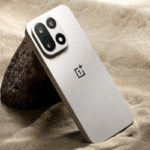Wearable Health Tech Are Revolutionizing Personal Healthcare

Wearable health tech offers a lot of benefits to the individual. With the global wearables market reaching 534.6 million in 2024, the integration of technology is revolutionizing our everyday lives. Maybe you own one, or you must have seen it everywhere. Someone is glancing at their wrist to check their steps, heart rate, or track sleeping patterns. No better way to proactively monitor one’s health, and ensure early interventions. Little wonder that health providers now acknowledge the role of wearables in delivering personalized treatments and enhancing their wellbeing.
From smart watches to fitness trackers, let’s explore how these small but mighty wearable health technologies are changing what we think about our health, their benefits and the challenges that they pose.
What Is Wearable Health Tech?
Wearables as the name suggests are smart devices meant to be worn on the body. It can be in the form of wristwatch, clothes, jewelry or any other medical devices that are doing an amazing work of tracking, monitoring and improving one’s health.
They count steps, check heart rate, glucose levels, stress levels, oxygen saturation, giving you real time insights into what’s going on in the body without having to step into a doctor’s office. Besides, your health provider can access and monitor body signals in order and be able to easily manage health issues.
Tech giants such as Apple,Microsoft, Samsung, are changing the game, launching several products with features that are transforming how we perceive health.
The Different Types of Wearable Health Tech
Let’s break this down. Because “wearable tech” isn’t just one thing—it’s a whole family of devices doing slightly different jobs.
1. Smartwatches & Fitness Trackers
The Apple Watches, Fitbits, and Garmins of the world. This is where most of us started. They are easy on-the-go to keep track of your health. Many of them can count your steps, monitor heart rate, sleep and even detect irregular heart rhythms or oxygen levels. Thanks to the built in sensors that is helping us wear health on our sleeves.
- Smart Rings
The likes of Oura Ring, Samsung, and more are stylish pieces that not only monitor your sleep, health, body temperature, recovery levels but also make you stand out in style.
- Health Patches & Biosensors
Stick-on sensors that continuously track things like glucose or heart activity. They’re becoming a huge deal in hospitals and even for home care because they send data directly to your phone or doctor in real time.
4. Smart Clothing
Shirts, bras, and leggings have sensors that track movement, posture, or even muscle fatigue. Imagine your clothes reminding you to straighten up after hours at a desk.
- Wearable ECG Monitor
These wearable devices can track heart activities on the go. It can detect heart irregularities and atrial fibrillation. This information is used by your provider to manage heart conditions.
How Wearable Health Tech Is Changing Personal Healthcare
These devices are doing more than tracking, they’re reshaping how we care for ourselves.
Real-Time Health Monitoring
We’ve moved from annual checkups to constant check-ins.
Your watch can spot an irregular heartbeat, your ring knows when you didn’t sleep well, and your patch might warn you if your blood sugar’s dipping too low. Wearables are with you all the time, tracking your health and ensuring early detection and treatment of any anomalies.
Preventive Health Is Finally Real
For years, doctors have talked about “preventive healthcare,” but wearables are actually making it happen. Instead of waiting for symptoms, people are noticing subtle patterns early. That awareness can change everything. It can mean catching problems before they aggravate.
Easy management of chronic diseases
Doctors can easily track the health of patients suffering from chronic diseases. They offer real-time monitoring, hence optimizing the treatments that are unique to the patient’s needs.
Empowering Everyday People
Wearable tech gives ordinary people access to information that used to be locked behind hospital walls. You can see your own data, spot your own trends, and make informed choices. It’s health care flipped on its head from reactive to proactive.
And according to a 2024 Deloitte survey, over 70% of wearable users say their devices make them feel more in control of their health. That’s empowerment.
The Benefits
Wearable health tech offers a lot of benefits and here are a few of them:
- Peace of Mind: That little pulse check or ECG reading can reassure you everything’s okay.
- Motivation: That gentle buzz when you’ve sat too long? It works. It gets people moving.
- Preventive care: Wearable health tech allows you to be steps ahead of your health games. No surprises. With continuous monitoring of body signals, it is easier than ever to promote proactive disease prevention.
- Collaborative work: wearables come with social features that can be shared with families and friends.
Challenges and Concerns
Privacy, for one. All that health data, where does it go? Who sees it?
Then there’s accuracy. Not every device is perfect. Sometimes they overcount, undercount, or just plain glitch out.
Data overload. We’re flooded with data daily from steps to calories, to heart rates, sleep patterns and many more. While there are tons of data, not all of them are clinically important.
However, awareness is growing. Manufacturers are improving accuracy, adding stronger privacy protections, and working with healthcare providers to make data more meaningful.
Conclusion
There is no doubt that wearable health tech has become a must-have for anyone who wants to keep a tab on their health. While at it, it is important to work with your health care physician for proper monitoring, diagnosing and treatment of any health issues.




